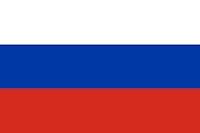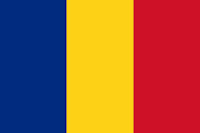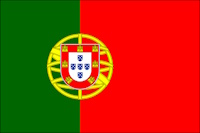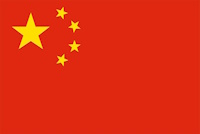Chapter 37
RESIST THE DRAFT
Many people of Japanese descent living in America in World War II felt that fear long before Ben’s epiphany. Among them were Yoshito Kuromiya, his parents, and three siblings—all living behind the barbed wire and armed guards of the Heart Mountain Relocation Center in the high desert of Wyoming in late January 1944.
On that first Sunday in December 1941, eighteen-year-old Yosh, as he preferred, was shopping for a used car with his older brother in Pasadena, California. They were on their fourth or fifth lot when a red-faced man burst from his office, screaming and shaking his fist in their direction. “We don’t sell to sneaky Japs!” the car salesman bellowed at the brothers. Not until Yosh and his brother retreated to their car and turned on the radio did they learn about the attack on Pearl Harbor.1
Yosh was only six months out of Monrovia High School in northern Los Angeles County at the time. Living in the heart of the country’s largest concentration of people of Japanese descent, he was studying art at Pasadena Junior College. Carefree and handsome, with a well-oiled pompadour and eyes that sparkled beneath his wire-frame glasses, Yosh felt no guilt or shame about Pearl Harbor.
Even as the anti-Japanese backlash built in America in the weeks following the attack, and family and friends fretted about where it was all headed, Yosh remained unconcerned. He brushed off the backlash as a “hysterical overreaction” that would quickly pass, and dismissed the talk about a roundup of Japanese Americans. “What’s the big fuss about my being of Japanese heritage?” he would muse. “We didn’t bomb Pearl Harbor. We’re Americans.”2
Years later, Yosh would ruefully acknowledge his misplaced innocence. “I was so naïve,” he said.3
AT THE TIME OF THE FEDERAL CENSUS taken in the spring of 1930, Los Angeles County was home to about thirty-five thousand people of Japanese ancestry—about one-third of the people of Japanese descent living in America at the time. Hisamitsu and Hana Kuromiya were among the thousands of Japanese immigrants who had settled there to work and raise their families. The couple had married on January 13, 1916, in their native Okayama prefecture on Japan’s main Honshu Island, and eight days later boarded a ship for America.4 Seattle was their port of arrival, but Hisamitsu and Hana soon made their way to Southern California. Hisamitsu found work as a gardener and the couple started a family. Yosh was their third son and fifth child, including one stillborn baby.
The Kuromiya family sunk roots in northern Los Angeles County, living in rented houses in the towns of Sierra Madre and Monrovia, at the base of the San Gabriel Mountains. In an effort to assimilate, Hisamitsu became James Kuromiya. The children attended public schools with white children and the boys played basketball and other sports. Yosh and his older brother Hiroshi spent their 1929 summer vacation with family in Japan, returning home to Monrovia just in time to experience the economic catastrophe of the Great Depression.
Living frugally, the Kuromiya family weathered the Depression’s hard times. Many Japanese immigrants and their children worked in farming, and by 1941 people of Japanese ancestry grew nearly 40 percent of California’s truck crops. Others found employment in agricultural produce distribution, and ethnic Japanese businessmen came to dominate the Los Angeles fruit and vegetable supply network prior to the war.5 Among them was James Kuromiya, who opened a produce stand.
Fishing, gardening, and clerical work in Little Tokyo communities in various West Coast cities also offered livelihood opportunities. The path to white-collar jobs proved much harder for Japanese Americans, despite their high education levels. By 1940, only 960 people of Japanese ancestry were employed as professionals in California.6
Despite their second-class status, Japanese immigrants and their children became the target of resentment in the American West during the Depression years because of their relative economic success. Political and military events in Asia—reported to the American public through the biased lens of an American press that tilted pro-China and anti-Japan—further fueled anti-Japanese attitudes. Japan had invaded Manchuria in 1931 and established the puppet state of Manchukuo. Six years later, Japan launched a full-scale and notably brutal war of conquest against China.
Tokyo’s militarism exacerbated the anti-Japanese backlash in America, especially with a white majority on the West Coast that was already inclined to distrust and dislike Japanese people. Japan’s expansionist actions and Hitler’s European aggression prompted Congress to approve the first peacetime draft in US history, and on October 16, 1940, five days before his twenty-third birthday, Yosh’s older brother Hiroshi was among the Americans who registered for the draft. Hiroshi had yet to be drafted by December 1941, but he was planning to be married. That’s why he was shopping for a used car with his younger brother on the morning of December 7.
By February 1942, there were almost daily headlines in the Los Angeles Times reporting how some politician or group was demanding the expulsion of people of Japanese ancestry from the state. Yosh was stopped by police one night as he was driving home. Police issued a verbal warning for violating the curfew and travel restrictions on Japanese people, but let Yosh go.7
On Saturday morning, February 21, the Kuromiya family awoke to the news that President Franklin Roosevelt had signed Executive Order 9066. The army now held the once-unimaginable power to expel people of Japanese descent from California or any other state.
BEN HAD UNWITTINGLY WITNESSED THE first moments of a nationwide roundup of Japanese set in motion by the Pearl Harbor attack when he had watched two men in dark suits lead Mike Masaoka from the basement of the North Platte church. Masaoka would spend only one night in a North Platte jail cell before his political benefactor, Utah’s Democratic US senator Elbert Thomas, got him released. “I was taken to the railroad station and put on a westbound train without so much as an apology,” Masaoka later recalled.8
After being pulled from his train for questioning during a stop in Cheyenne, Wyoming, Masaoka reached San Francisco on December 11. He found the Japanese American Citizens League headquarters swamped with frantic appeals from the families of men who had been detained, and within days his own efforts to win their release attracted the renewed attention of the FBI. Masaoka and another national JACL leader, Saburo Kido, were hauled into the agency’s San Francisco bureau for harsh interrogations periodically. While other activists and community leaders tried to secure the release of detainees, Masaoka turned his focus to reassuring Americans that Japanese immigrants and their US-born children could be trusted.9
As events would soon prove, Masaoka’s campaign was a fool’s errand.
In the aftermath of Roosevelt’s executive order, General John L. DeWitt, the dour commander of the Western Defense Command, set in motion the mass removal of every person of Japanese descent in California and most in Oregon, Washington, and Arizona. The orders presented Masaoka with a tough choice. Should he urge Japanese Americans to resist the roundup? Or should he encourage them to cooperate in hope the Roosevelt administration would come to its senses? In a fateful decision, Masaoka and the JACL leadership supported the roundup.
FOR THE KUROMIYA FAMILY, THE unthinkable happened in May 1942. Carrying suitcases crammed with clothes and a few cherished possessions, they left their home at 201 West Huntington Drive in Monrovia and boarded army trucks. They were driven fourteen miles east to a holding camp on the Pomona Fairgrounds.
The Pomona Assembly Center was the innocuous name given to the makeshift facility. It was one of two Los Angeles County camps created to temporarily confine people of Japanese descent. The Pomona camp opened on May 7 and, during its four months of existence, housed as many as fifty-four hundred people—most of them forced from their homes in the urban California counties of Los Angeles, San Francisco, and Santa Clara.
In August 1942, most of the Pomona incarcerees were transported by train to a dusty, windswept camp in the remote Bighorn Basin of northwest Wyoming. It was called the Heart Mountain Relocation Center, another euphemistic name that sought to gloss over the staggering violation of civil and constitutional rights underway.
Located twelve miles north of the town of Cody and about twenty miles south of the Montana state line, the camp was named for a massive slab of limestone and dolomite that rose 8,123 feet above the basin floor, like a landlocked Rock of Gibraltar. In time, the camp would be surrounded by barbed wire and nine guard towers. For now, though, it sprawled across 740 acres of government land, eight miles east of its namesake. There were 468 wooden barracks, 39 mess halls and utility buildings, a 150-bed hospital, schools, recreation halls, and livestock pens.
Yosh would forever remember the misery of his first Heart Mountain winter. “As a native Californian, I was ill-equipped to deal with the biting winds, subzero temperatures, and knee-deep snows,” he later wrote. “The snow did not fall gently in Heart Mountain. It came horizontally like icy spears across the barren plains to crash into the tar-papered barrack walls.”10
Inside the drafty barracks, families lived crammed into small areas grandly called “apartments.” Privacy was virtually nonexistent and the furnishings crude. Many residents cobbled together their own furniture from scrap lumber. Everyone slept on an army cot.11
There was no running water or cooking facilities in the barracks. Instead, residents were forced to walk, sometimes in subzero temperatures or choking dust storms, to separate utility buildings to perform personal hygiene routines and wash their clothes in communal facilities. Meals were also communal affairs served in mess halls.
Stripped of their homes and livelihoods, adults tried to ease the transition for their children. Heart Mountain High School opened in the fall of 1942 with an enrollment of fifteen hundred students. There was a band and school newspaper, sports competitions, dances, and other social events. Boy Scout and Girl Scout troops were formed, sports leagues organized, and drama, arts, and crafts activities offered. Japanese cultural activities took place, but without the support of camp administrators.

Location of incarceration camps for people of Japanese descent, 1942–1945
The worst part of life at Heart Mountain was the uncertainty. How long would this nightmare last? No one could say.
FROM THE BEGINNING, A NUMBER OF Heart Mountain incarcerees weren’t content to meekly accept their fate. Their words and acts of resistance exposed young men like Yosh to the notion of confronting the US government. Communal living accelerated this process. Young people began to take their meals with friends rather than their families, and some began to challenge established views on politics, race, and patriotism.
In one of the first acts of violent resistance, a frustrated inmate working as a cook attacked a white worker with a kitchen knife on September 6. A few weeks later, outraged incarcerees banded together to protest the arrest of thirty-two children for sledding outside camp boundaries. More acts of resistance followed.
Amid the tensions, the army tried to recruit volunteers to build a barbed wire fence around the camp perimeter—ostensibly to keep stray cattle away. Working-age men refused to help. Three thousand people signed a petition declaring that the fence confirmed that Heart Mountain was a “concentration camp,” and its inhabitants were “prisoners of war.”
As the first anniversary of the Pearl Harbor attack approached, protesting inmates at Manzanar, in the California wilderness near Death Valley, attempted to take their frustrations out on leaders of the Japanese American Citizens League. The protesters besieged the camp police station. Security forces responded with gunfire, killing two inmates and wounding nine.12
The incarcerees had willingly accepted the initial orders to abandon their homes and livelihoods to gather in “assembly camps.” They had boarded the trains that carried them to remote “relocation camps” like Heart Mountain. But their willingness to accept without protest their loss of constitutional and civil rights had begun to crumble as 1942 drew to a close.
Since the attack on Pearl Harbor, the War Department had engaged in a fierce internal debate over whether to accept Japanese Americans into military service. Ben had barely made it into the army while the deliberations were still underway. On January 5, 1942, the army discharged most Nisei soldiers or assigned them to menial duties. Later that month, the War Department reclassified draft-age Nisei as ineligible for military service. And on March 30 the War Department stopped inducting Japanese Americans into the armed forces altogether.









